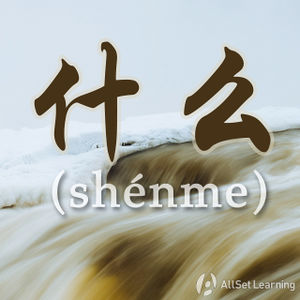Expressing "everything" with "shenme dou"
-
Level
-
Similar to
-
Used for
-
Keywords
"什么...都/也" (shénme...dōu/yě) is a pattern often used to express "all" or "everything". This pattern also works with other question words, such as 哪儿 and 什么时候.
Contents
Structures
The structure is very clear, as many Chinese grammar points are.
什么 + Noun. + 都
什么 + Noun. + 也
什么 + 都/也
Examples
- 以后 你 应该 什么 水果 都 吃。Later you should eat every fruit.
- 我 什么 电影 都 喜欢 看。I like to watch all the movies. (implying that I like all the movies that come my way)
- 今天 我 什么 工作 都 做了。Today I did all my work.
- 我 什么 都 知道。I know everything.
Negative Structures
The negative structure simply adds a 不 or a 没 after the 都/也.
什么 + Noun. + 都/也 + 不
什么 + Noun. + 都/也 + 没
Examples
- 以后 你 应该 什么 水果 都 不 吃。Later you should not eat every fruit.
- 我 什么 电影 都 不 喜欢 看。I don't like to watch every movie. (implying I don't like movies in general)
- 今天 我 什么 工作 都 没 做。Today I didn't do any work.
- 我 什么 都 不 知道。I don't know anything.
See also
Sources and further reading
Books
- Common Chinese Patterns 330 (汉语常用格式330例) (pp. 195)→buy
- Modern Mandarin Chinese Grammar: A Practical Guide (pp. 286-8) →buy
- Integrated Chinese: Level 1, Part 2 (3rd ed) (pp. 216-7) →buy



